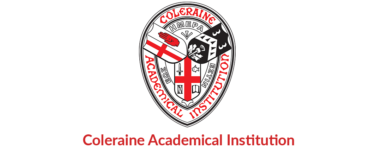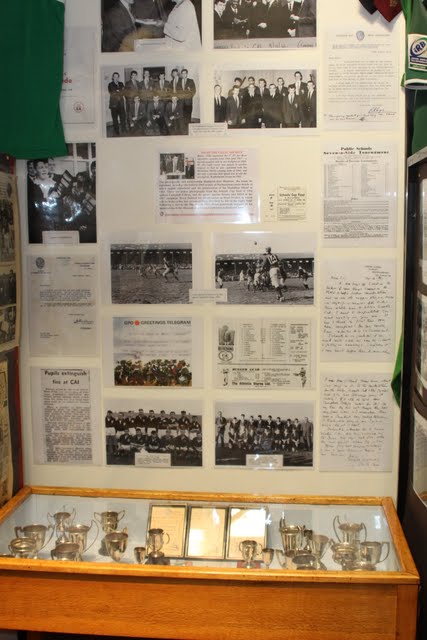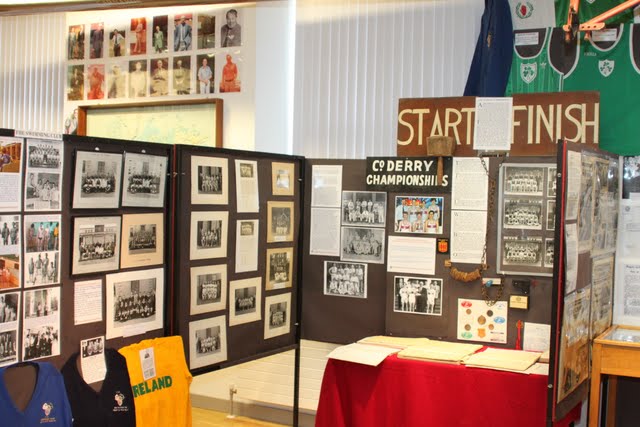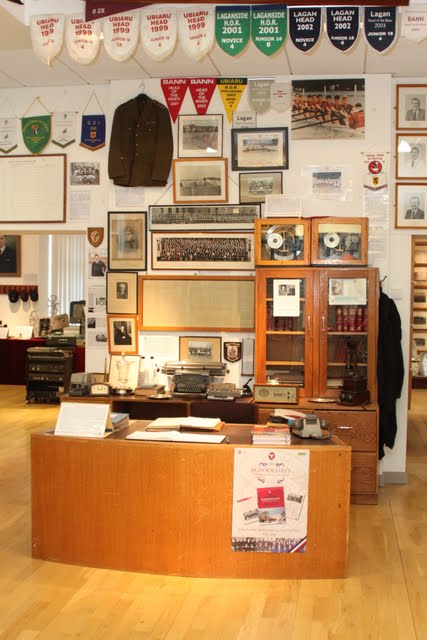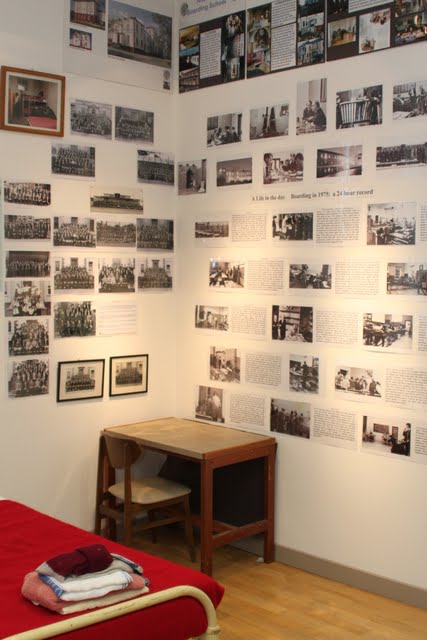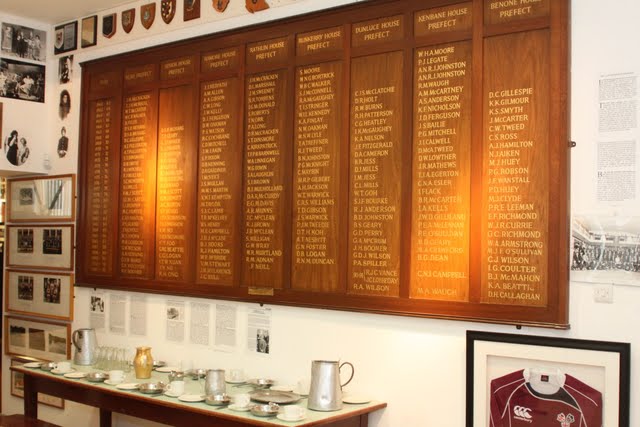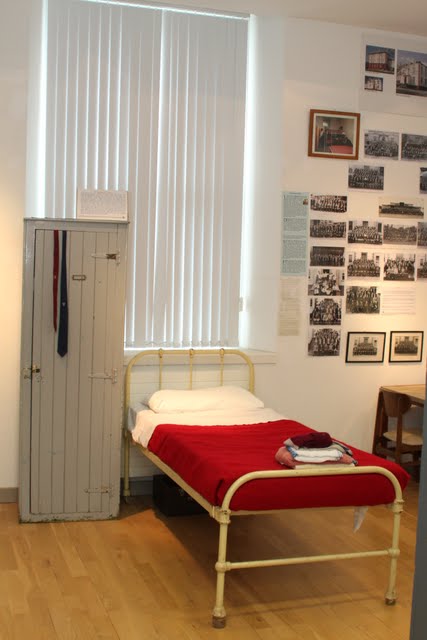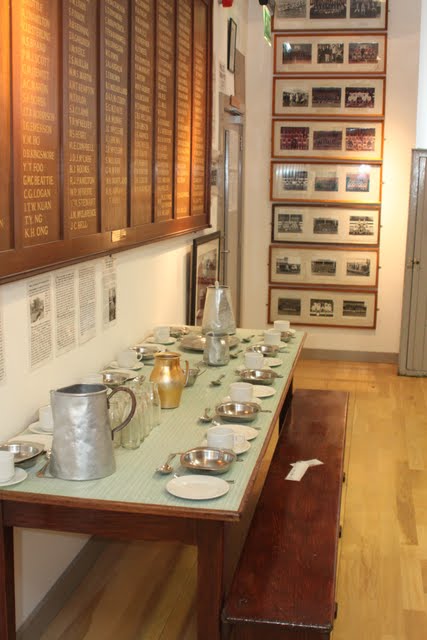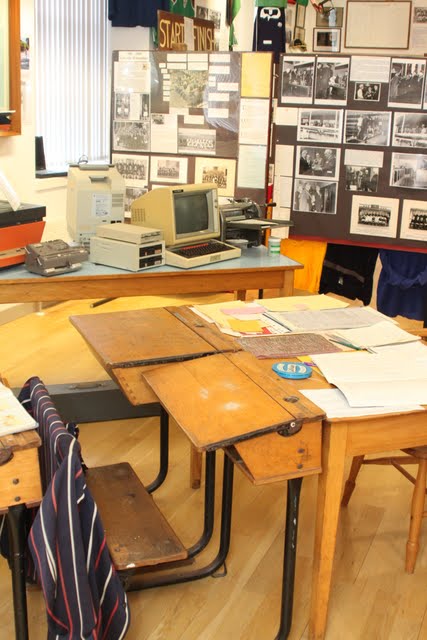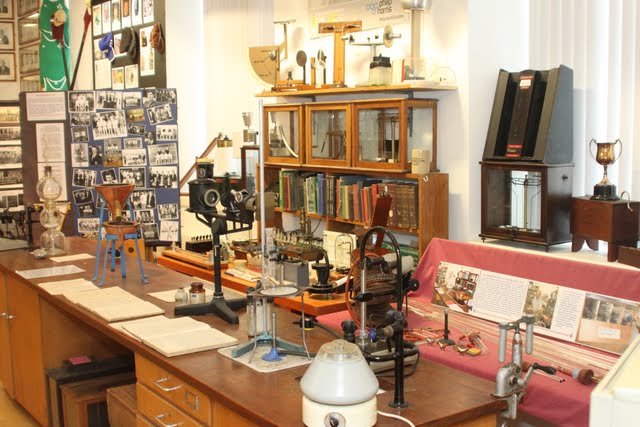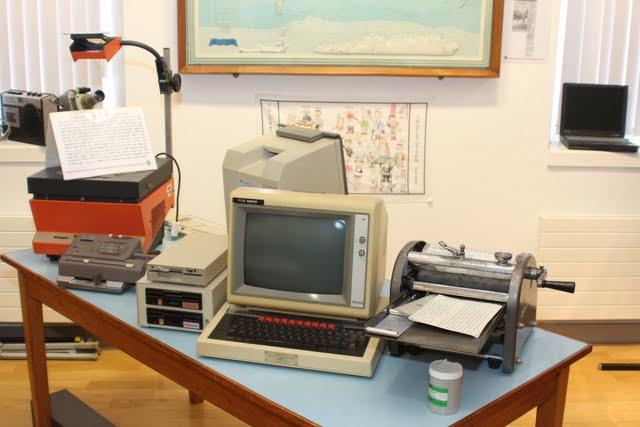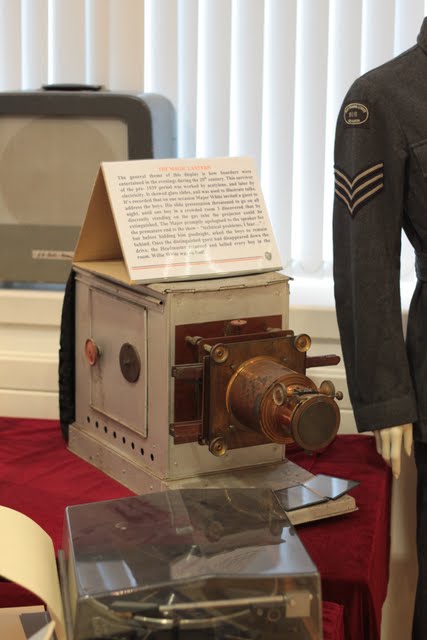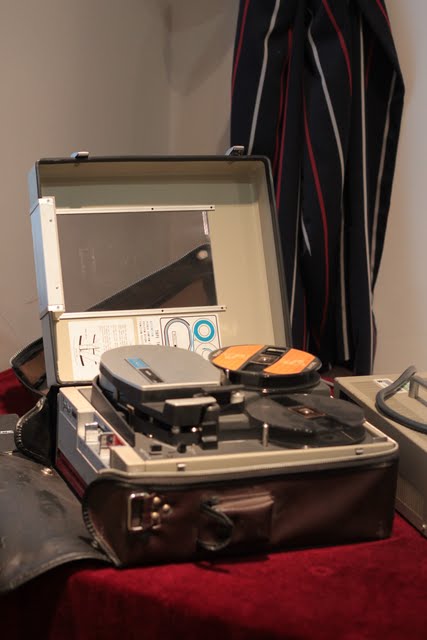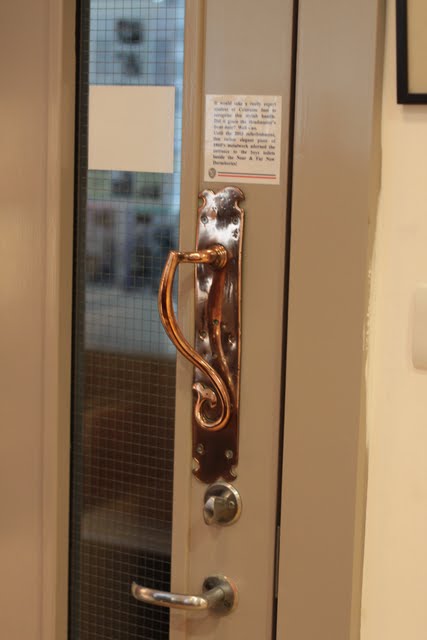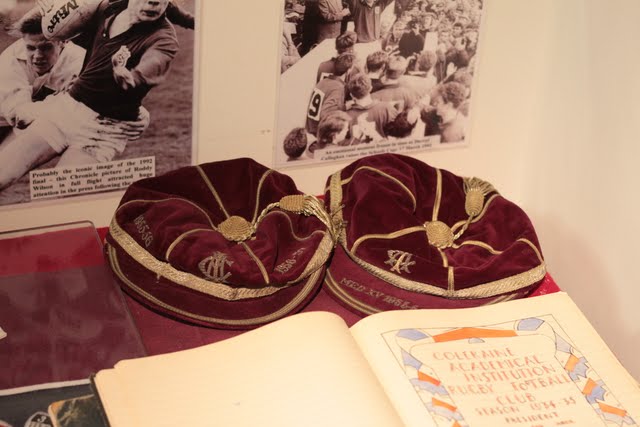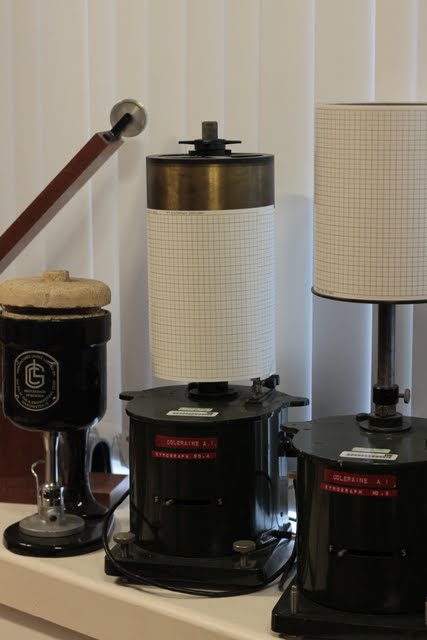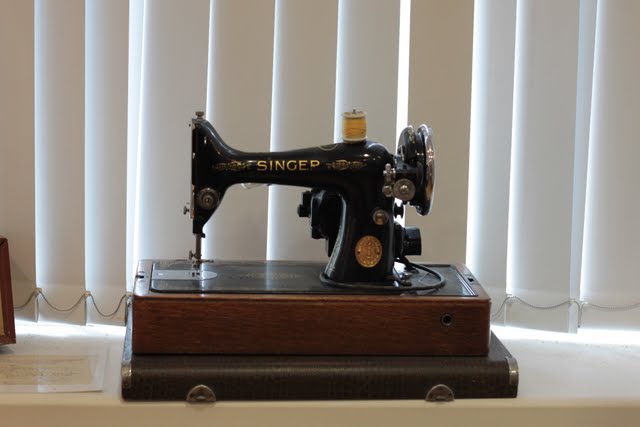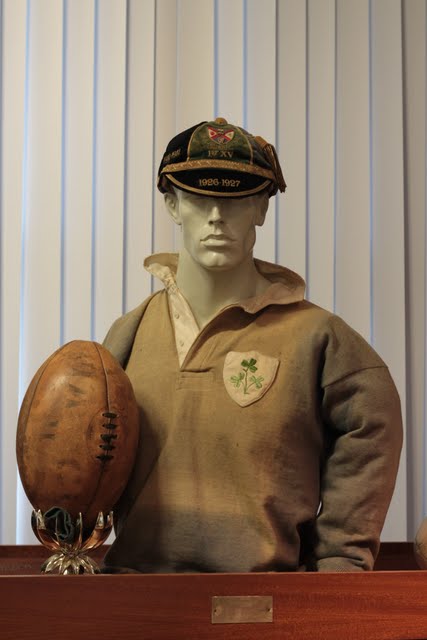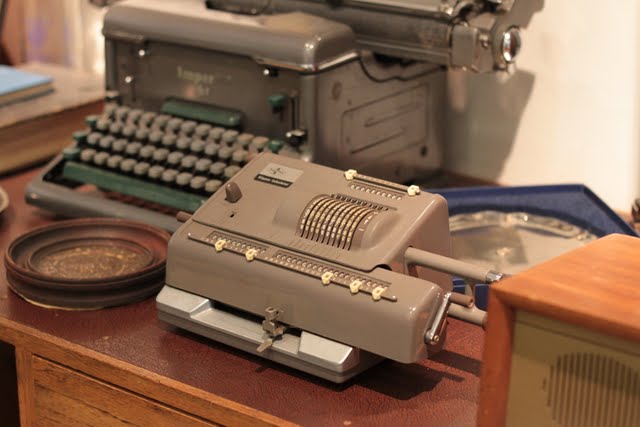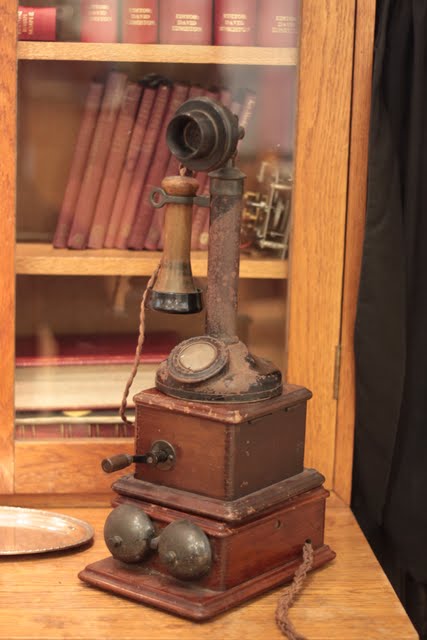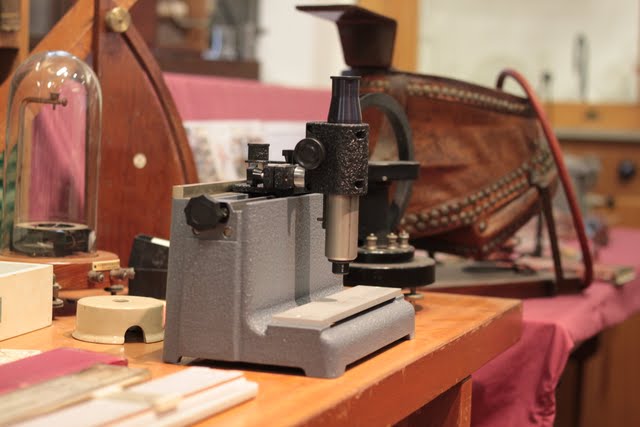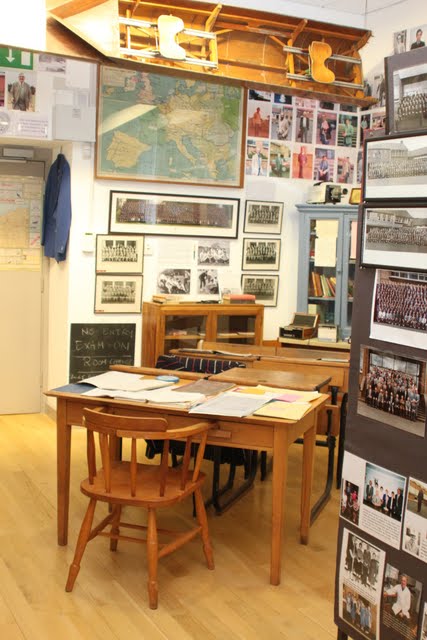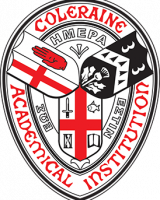Coleraine Academical institution Museum
Main Museum Entrance
Opposite the classroom is a display of Science equipment, some of it going back to the turn of the twentieth century. Some of the older equipment still defies identification – if you have specialist knowledge, we would appreciate your help to fill in the gaps in our knowledge! The oldest item is almost certainly a brass microscope in its original case, given to the school in 1883. One of the oddest is a small episcope which (in theory) could project a picture on to a screen. Those who remember it, though, reckon it needed the eye of faith to see.
school Boarders
Boarders may either shudder or smile at one of the two annexes, covering the history of the Boarding Department. There is a locker and bed, with regulation school linen and the familiar red blanket, and also one of the dining hall tables with a place set for breakfast. On the walls are several themed displays covering daily life in the Boarding Department from the 1930s to the 1990s. On display also can be found notes to parents (including the famous warning that ‘spurious garments will be impounded and returned to parents, C.O.D.!), instructions for staff, dormitory lists, pass books – do you remember
There is a duty rota, showing the complexity of running a boarding school of up to 300 boys and over twenty teachers, to say nothing of the Matron’s ancillary staff and the catering staff. Look out for items as big as the fireplace and the Prefects Board from the Boarding School dining hall, and as small as a staff napkin ring, a metal cereal bowl, and the bell rung for the Sunday Walk on the school grounds.
headmasters
Sports, and extra-curricular activities
Sports, and extra-curricular activities generally, are a huge part of school life. There is a variety of exhibits, and our longer-term plans include further coverage of the full range of sports, societies and cultural activities – we have begun with a commemoration of musicals of the 1990s. There is Rugby memorabilia going as far back as the 1895-1986 season, and as far forward as the Schools Cup victory nearly a century later. The smallest exhibit is a miniature Schools Cup, given to each member of the victorious team of 1939. Among the rugby shirts presented by Former Pupils is an Irish jersey donated by the late H. O’Hara O’Neill, one of the first two Old Boys to play for the British Lions, back in 1930.
Some other items of sporting and cultural interest generally – are at present displayed in the school’s main Reception Area and at the Drama Studio in this building : we hope that some of these may in time be included in the Museum collection.
